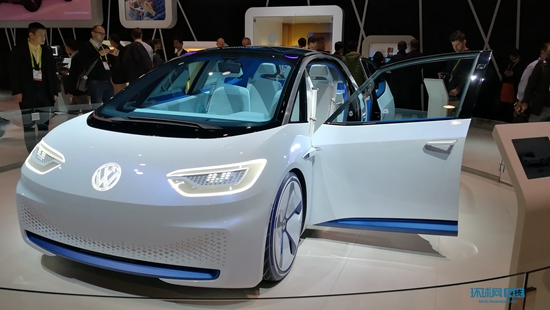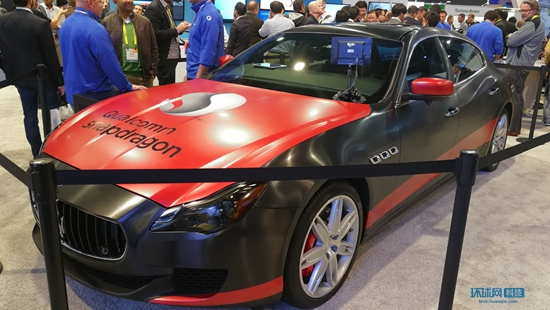ã€Global Science and Technology Report Special Reporter Jiang Yang】 United States local time on January 8, the International Consumer Electronics Show (CES2017) is drawing to a close, but each exhibition hall is still crowded. According to official data, last year's CES attracted nearly 180,000 visitors from all over the world. This year's data has not yet been announced, but coincides with the 50th anniversary of the conference, and the number of participants is likely to reach new heights. The biggest surprise of this year's show is apart from the blooming of virtual reality (VR) applications, smart driving technology can be described as a sudden rise. The number of smart car products debuted has caused netizens to jokingly describe the charm of this year's CES auto show.
During the three days that the pavilion walked through, CES constantly refreshed my impression of the show. People are the most intuitive experience. Despite the large exhibition area, small and medium-sized companies in the industries of drones and virtual reality are centrally arranged in separate exhibition areas, and they cannot escape crowded crowds during shuttle booths. The CES exhibition mainly follows the fields and scale involved in the company. Different business units of the same company are also arranged in different exhibition halls to bring more smooth visit experience to the participants.
Through a dialogue with the audience, an interesting keyword is "perfect." Many viewers believe that the biggest feature of this year's show is that many of the concepts and ideas proposed last year were implemented this year. The most typical one is a VR application. In the consumer, gaming and live markets, VR has made great progress and the content experience has greatly improved. When an American Qualcomm president, Mr. Jacobs, was interviewed by this reporter, he said: “Only when people realize the great potential and power of VR applications will they devote more efforts to development, and VR wants to embark on a healthy development path. , we must have a more complete development paradigm."

Another focus of this year's show is smart driving technology. Whether it is a car manufacturer including Volkswagen, Ford and BMW, or Qualcomm, Baidu and Infinity and other technology giants have entered this market with a relatively high profile. From the current point of view, smart driving mainly includes technology modules such as unmanned driving, voice recognition, smart interconnection, and wireless charging.
Amazon’s voice assistant Alexa, which was launched last year, can be said to be everywhere. Ford and Volkswagen and other automobile manufacturers have chosen to integrate Alexa in the system to achieve the effect of voice control. At present, this technology is still a prototype. It is mainly connected to the interior of a car through a mobile phone, and then communicated and controlled through third-party software.

After Tesla and Google conducted a road test for driverless driving, this "future technology" gradually attracted everyone's attention. The current mainstream autopilot technology is mainly realized through sensor perception, big data reception analysis and visual calculation. Among them, the sensors are mainly responsible for detecting nearby objects and obstacles. Big data can be used to optimize the driving route by collecting real-time traffic conditions. As for the visual calculation, it is identified through the screen in the camera, so as to protect the driving.

Qualcomm, a leading technology company in the era of smart phones, has begun to deploy smart driving. The first is the chip. Qualcomm Xiaolong 820A, which is widely used in smartphones, handles information processing that will be used in smart cars. This will be Qualcomm's first landing on the automotive platform. Followed by the car networking technology, thanks to advanced baseband technology, Qualcomm will provide on-vehicle Internet services for many auto manufacturers. This is also a key component of the artificial intelligence in the car, through the reception of external real-time information and the driving of big data. Analytical processing, on-board systems will be capable of autonomous learning, which will enhance the autopilot experience.
The last is wireless charging technology. Qualcomm's wireless charging solution is called Halo. The principle is charging through the charging board at the bottom of the vehicle through the ground charging board and magnetic resonance technology. According to field staff, this transmission method has been perfected for many years, and the charging efficiency is extremely high. Compared with the traditional plug charging, the transmission loss is within 1% and it is absolutely safe.
Although the smart driving system at the show was in full bloom, all solutions were conceptual products. Speech recognition and control are still in their infancy, with limited functionality. The unmanned technology is also in the testing phase. Baidu and other companies will launch more extensive "road tests" to test the system and look for problems during the year.
Compared with smart driving, the virtual reality industry that has developed over the past year has begun to take shape. There are no shortages of VR applications in major pavilions. No matter whether it is games, videos or simulators, it attracts a large number of visitors to queue up for experience. Nvidia has a unique idea for the development of VR games: In situations where the hardware is relatively limited, the reality of the experience is increased through more calculations and detailed feedback. In the game scene experienced by reporters, two simple remote controls successfully simulated the feel of guns, bows, and hammers through vibration interaction.

Speech recognition is not only reflected in smart cars. Home appliances such as Samsung's smart refrigerators and homegrown brands' must-have robots also include a large number of voice recognition elements. These applications, without exception, emphasize more interactions and possibilities. For example, a must-have robot can communicate with children through voice recognition, and the accumulation of the database will make communication more in-depth and real. This is a new attempt for children's education.
It is worth mentioning that among the more than 3,800 exhibitors at the CES, there were more than 1,300 Chinese companies, which became an important force for the exhibition. It is also hoped that more Chinese technology companies will take the best products to the world stage in the future.
DLP Home Projecror-The principle is mainly to switch the light through the control of the micro-mirror, so as to realize the color scale and gray scale. On the small DMD chip, there are nearly a million small mirrors that are smaller than the hair The advantages of DLP projectors are: long service life and fast response speed
Dlp Home Projecror,Best Video Projector,Hdr Projector,Living Room Projector
Shenzhen Happybate Trading Co.,LTD , https://www.happybateprojector.com